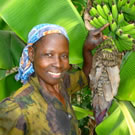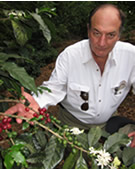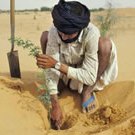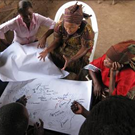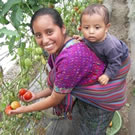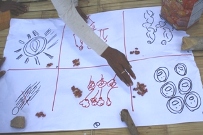Meredith Waters (US) and Gillian Primus (Grenada) have been working for the past six months on a project on the Island of Grenada that has been hit by a series of tropical hurricanes and tropical storms exhibiting increased ferocity over the past seven years.
| 1. Meteorological Data | |
 |
Most recently, they have investigated meteorological data to see if there have been measurable changes in weather, and long-term weather forecasting to see how climate change may be affecting the island. |
| They then conducted a survey with community members to better understand local knowledge of climate conditions—and also coping strategies that these community members have adopted. | |
| 2. Local Knowledge. | |
 |
They then compared the local knowledge with the scientific knowledge and found substantial similarities. With this new understanding they then fine tuned their project outline to best meet both climate variability and community need.
|
|
A community-based adaptation program will improve crop harvests through a farmer soil & water conservation program, and through a farmer extension program designed to incorporate drought resistant farming techniques and crops into subsistence farms. This will increase the levels of food security, and decrease the levels of malnutrition and increase farm incomes. Results of community survey The extreme weather events were noticeable from eleven years ago, but major observation began 7 years ago in 2004 with hurricanes ‘Ivan’ which was followed in 2005 by Hurricane “Emily” and since then these have been followed annually by tropical storms. B. Vulnerability Matrix: What is a prioritization of the community’s greatest hazards they face? C. Vulnerability Matrix: What parts of their lives (livelihood resources) are the most vulnerable? Compare your project outline to new information that you may have learned that the workshop. CBA program related to climate variability. New program related to climate change added to outline Download the two completed reports here: |
|






